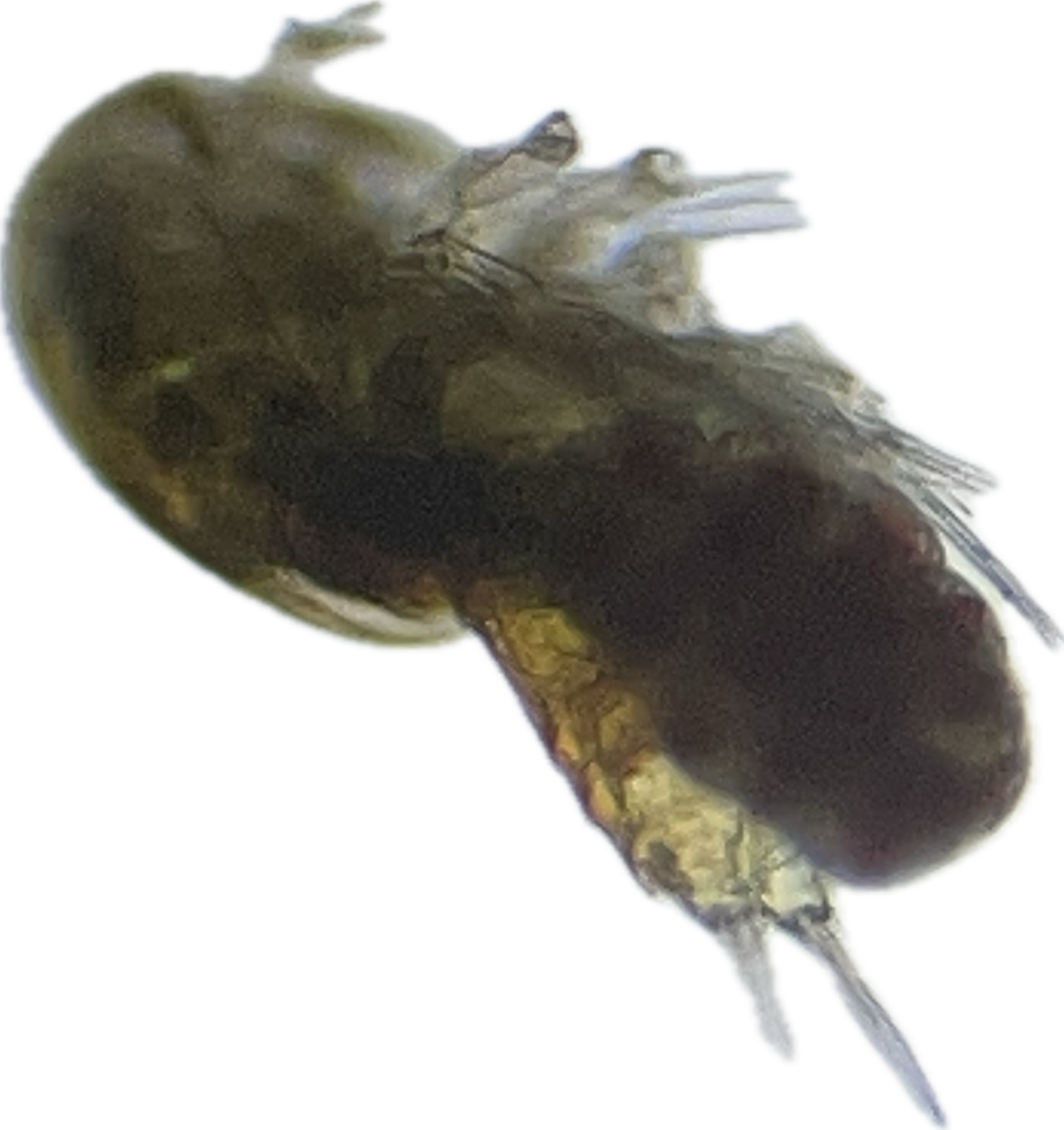
Live Zooplankton: Tigriopus californicus, Copepod Culture with Phytoplankton
With its high nutrient content and enticing “eat me” dance, Tigriopus californicus, aka Tig pods, make the perfect supplement to your reef’s planktonic feed menu, especially for the picky members of your community tank.
Why T. californicus?
- High in essential fatty acids (HUFA; 20:5n-3 and 22:6n-3) which cannot be synthesized by fishes and need to be ingested through live prey. HUFAs are needed for growth, reproduction, and development for fishes and shrimp
- Huge source of nitrogen and phosphorus which help build calcium carbonate exoskeletons if used consistently (important for coral)
- Faster reproductive rate, flexible diet, and tolerance to different salinities and temperatures vs other copepod species
- Large body size
- High in carotenoids (astaxanthin) which help maintain predators’ vibrant colors
- Hide in the sediment and in aquatic plants so are available to your tank’s feeders 24/7
- Feed on detritus & algae, so they keep your tank clean while feeding your critters
Critters that love them
- Wrasses, seahorse & pipefish fry, dragonettes, filefish, basslets, cardinal fish, anthias, cardinal fish, butterfly fish, most corals
Care Tips
- Acclimate a portion of the T. californicus to the same water temp and salinity as your home tank (our copepods are reared at 20 C which increase the fatty acid content)
- Feed your tank as needed
- Short-term: store the remainder of the copepods at a cool temperature; Longer-term: leave them out at room temperature to allow their supplied algal food (present in the culture water from ARS) to continue to photosynthesize. The female copepods tend to eat their young so use your copepods quickly!
T. californicus is available in two sizes
0.5 L or 1 L
References:
Drillet, G., Jorgensen, N.O.G., Sørensen, T.F., Ramløv, H., and B. W. Hansen. 2006. Biochemical and technical observations supporting the use of copepods as live feed organisms in marine larviculture. Aquaculture Research. 37: 756-772.
Kahan, D., Uhlig, G., Schwenzer, D., and L. Horowitz. 1982. A simple method for cultivating harpacticoid copepods and offering them to fish larvae. Aquaculture. 26: 303-310.
Lavens, P., and P. Sorgeloss. 1996. Manual on the production and use of live food for aquaculture. FAO, Fisheries Technical, Rome, 295 pp.
Lima, L.C.M.. 2011. Use of Harpacticoid copepods in aquaculture, pp. 155-161. In, L. M. Salander and D. N. Alwell (eds.), Food Production: New Research. Nova Science Publishers, New York, NY.
Lima, L.C.M, Navarro, D.M.A.F., Souza-Santos., L.P., 2013. Effect of diet on the fatty acid composition of the copepod Tisbe biminiensis. Journal of Crustacean Biology 33: 372-381.
Nanton, D.A., and J.D. Castell. 1998. The effects of dietary fatty acids on the fatty acid composition of the harpacticoid copepod, Tisbe sp., for use as a live food for marine fish larvae. Aquaculture 163: 251-261.
Sargent, J.R, Bell, G., McEvoy, L., Tocher, D.,vand A. Estevez. 1999a. Recent developments in the essential fatty acid nutrition of fish. Aquaculture. 177: 191-199.
Pairs well with

Live Zooplankton: Tigriopus californicus, Copepod Culture with Phytoplankton


